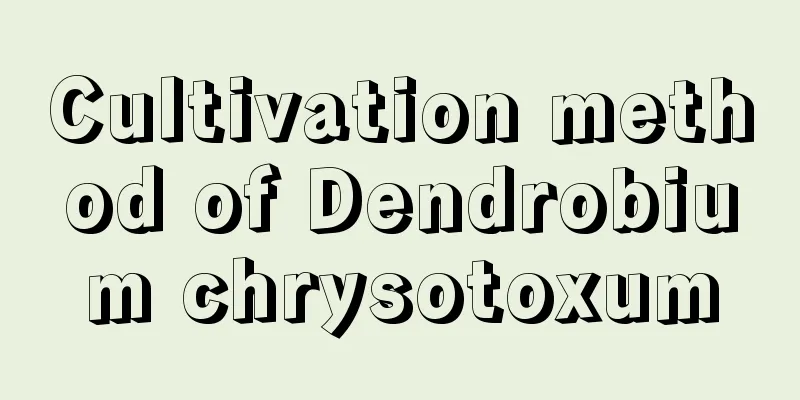Cultivation method of Dendrobium chrysotoxum

1. Maintenance methods1. Temperature: It likes high temperature environment, and this habit can be easily seen from its distribution range. Therefore, the temperature between 25 and 35 degrees is more suitable. In addition, it is not cold-resistant, and it is safer for it to survive the winter at temperatures above 15 degrees. In addition, you should also pay attention to the temperature difference, which is better to be around ten degrees. 2. Light: It prefers semi-shady environment. During its growth period, there should not be too strong light, otherwise it will cause a series of uncomfortable reactions. However, in winter, the sunlight is not too strong and there is no need for shade. 3. Watering: Dendrobium chrysanthemum prefers an environment with high humidity. When the growth rate is faster, the substrate must be kept moist at all times. On sunny days when the temperature is high and relatively dry, you also need to spray some water in time. 4. Fertilization: Dendrobium chrysanthemum likes fertilizer. Generally speaking, it can be applied once a week. You can use fully diluted liquid fertilizer, but the concentration should not be too high. 2. Breeding techniques1. Reproduction: You can use the division method. When using this method, be careful to choose a large, strong, and dense plant as the mother plant. After the flowering period is over, you can reproduce. Take it out of the pot and tidy up the roots. From here, it can be divided into several sections. When planting, put some soil in first, then put the plant in, then fill the soil again, and compact it further. 2. Repotting: Try to do it once a year, or once every two years is also fine. You can also change the pot after the flowering period, which means that root propagation can be carried out at the same time. It can also be done directly in spring, when new buds have not yet grown. After repotting, place in a cool place. 3. Problem diagnosis and treatment1. Diseases: The main types of diseases include "anthracnose" and "powdery mildew", which can be treated with chlorothalonil, and the diseased leaves and other infected parts must be cut off in time. 2. Pests: mainly "red spiders" and "scale insects". They usually appear in groups and reproduce at a very fast rate, so they need to be sprayed with pesticides in time. IV. Other issues1. Toxicity: It is non-toxic and can be used as a medicinal material. 2. Can it be raised at home? It is quite suitable to be placed at home, where it can be used for viewing and to purify the surroundings, but it has high requirements for temperature. |
Recommend
Why are the peach leaves turning yellow?
Causes and prevention of yellowing of peach leave...
The value of Albizia Julibrissin
The ornamental value of Albizia Julibrissin The A...
The difference between the peace tree and the Yuanbao tree
1. Peace Tree This name is its commercial name. I...
How to grow the succulent plant New Jade Ornament
How to grow the succulent plant New Jade The succ...
Can cinnabar root seeds be planted?
Can cinnabar root seeds be planted? The seeds of ...
Where is the smooth sailing flower suitable for placement?
1. Living Room "Smooth Sailing" is suit...
How to determine whether pigs have blue ear disease?
Porcine reproductive and respiratory syndrome, al...
What causes dahlia leaves to turn yellow?
Dahlia is a favorite food of many flower lovers. ...
How to make sweet potatoes sprout quickly
Sweet potato germination environment Sweet potato...
Artificial cultivation of Gastrodia elata technology
Gastrodia elata has high nutritional value and is...
How to prune lantern flowers? The best time and method
Lantern flower pruning time Lantern flowers can b...
Are cherries and cherries the same? What is the difference?
Cherries and cherries are different. There are ma...
The succulents in your home die easily, but other people’s succulents bloom in 5 pots. What’s going on?
High temperatures lead to death from sweltering T...
The reason why the leaf tips of hydroponic white palm turn black
1. Frostbite Cause: The leaf tips of hydroponic w...
How many years does it take for loquats to bear fruit? How long does it take for them to bloom and bear fruit?
Introduction to loquat planting Loquat likes warm...









